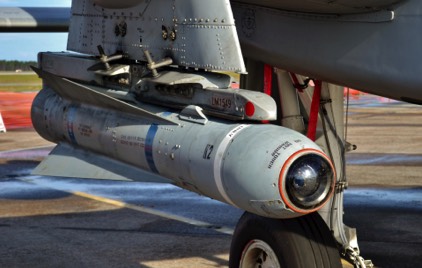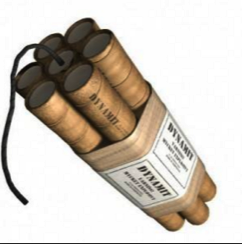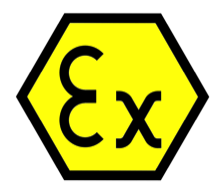Hazards of Electromagnetic Radiation to Ordnance (HERO)

- Example Serious HERO Incident:
Their have been about 110 reported HERO incidents in the last ten years where RF fields led to unexpected ignition of an EED. Probably the most famous was in 1967 on the aircraft carrier the USS Forrestal. That led to the US Navy HERO test lab and Safe Separation Distance RF testing programs. We provide a nonmilitary example with details report material below.
This is a report of a fatal incident Explosive Risk Assessment in Canada. Jean-Francois Lachance, 32, a blasting technician, employed by Geophysique Sigma Inc., was fatally injured when an explosion occurred at about 4:00 p.m. on November 9, 1991. Mr. Lachance, a member of a three (3) man blasting crew, was preparing to load a charge for a seismic blast. The blasting was part of a study to determine soil conditions. This work was being done on a proposed waste disposal site in the municipality of Val-Des-Monts, North East of Hull in the Province of Quebec. The probable cause of the accident, as reported in Quebec's Ministry of Public Security report, was attributed to the use of a portable radio (MOTOROLA, series HT600 FM, 165.030 Mhz, 5W) in close proximity of an explosives. The mining and construction industry recommend as best practices to ban all radio transmission from work site, but should never be closer than 15 meters to explosives (see http://www.va-i.com/Vis-SEC/Work/Reference/HERO/Recommended%20safe%20working%20practices.pdf )
- RuBee is HERO ZERO: RuBee Has A Zero SSD:
RuBee is the only wireless technology to ever obtain a zero safe separation distance (SSD see HERO Tab ) for both a transmitter and receiver on fused ordnance with US Navy tests at Dahlgren. We call that HERO ZERO - while many others claim to have HERO ZERO tags (e.g. RFID, Savi) the transmitters are not HERO ZERO and typically have a SSD of 3 to12 feet. That means one must read the tag with a guarantee that the transmitter never gets closer than the SSD. For example most RFID transmitters are 4 watts, and have a SSD of 8 feet.
If you use the US Navy quick safe SSD calculator equations (see http://www.pica.army.mil/E3TEAM/ ) RuBee produces .0000000009 watts of RF power at 0.131 MHz assume antenna gain 2.14 DB and has a safe distance of 0.000097954 feet or .03 mm. In actual tests by US Navy RuBee has SSD of zero (see http://www.va-i.com/Vis-SEC/Work/Reference/HERO-Signed.pdf ). The same SSD calculation for a 4 Watt, 814 MHz RFID base station with antenna gain of 2.14 DB (Standard for Industry) is about 8 feet. In practical tests carried out by US Navy RFID has SSD of 5-12 feet depending on space (open vs closed reflective).
Hazards of Electromagnetic Radiation to Fuel (HERF)

ATEX, UL, ANSI and IEC

In addition to HERF and HERO risks, RuBee tags, base-stations must also meet international intrinsic safety standards that guarantee the hardware can not produce an accidential spark, or if a catastrophic failure occurs (e.g. battery short) the hardware can not lead to an explosive ignition. Many classes of explosive environments have been defined by three sets of international bodies; ATEX, UL (ANSI) and IEC.
RuBee tags have been tested certified as safe by Defense, Oil and Gas, and government customers as well as by VAI for use in highly explosive environments. The current active tags meet MIL STD 810G and are intrinsically safe in an explosive environment. With a Li military grade encapsulated battery we can provide a guaranteed battery life of 25 years. As packaged a tag with approved IEC/EN 60079-18 encapsulated material, these tags meet ATEX Zone 0 (pure hydrogen acetylene atmosphere); meet Class IIC under IEC 60079-0 (pure hydrogen and acetylene atmosphere); and met NEC 501 Class 1, Div 1 and NEC 505 Class 1, Zone 0 Group B and A (pure hydrogen acetylene atmosphere).
The same standards have been met by our routers and the ATLAS antenna systems. ( see Video Data Sheet). Many RFID, RTLS and RF tags make the similar claims. However, only the tag has met the claimed explosive standard, not the base station or antenna. RFID systems in the 300 Mhertz 800 Mhertz range produce 1- 4 watts of power many times over the safe limit for HERF and HERO limits.
